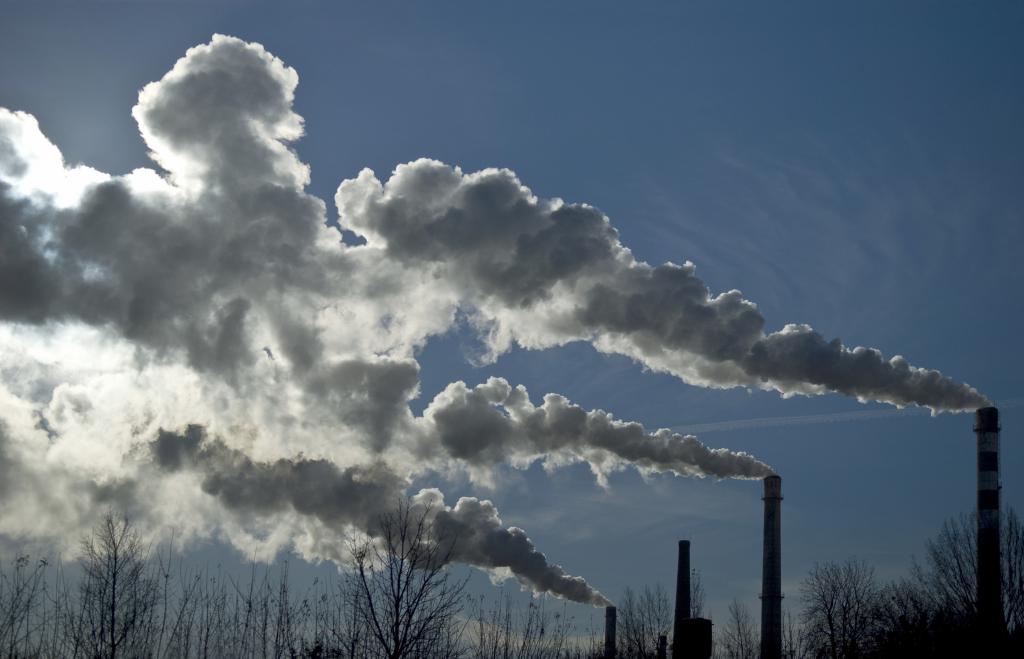Do you know how much China pollutes? Reports

Despite efforts on the green transition, 2023 was a record year for CO2 emissions. What the Global Carbon Project study says
Record carbon dioxide emissions in 2023. Despite all the efforts, despite the very high costs of energy and the shower of green subsidies , 2023 becomes the year in which global emissions of anthropogenic origin reached the maximum.
This is certified by the very serious annual publication Global Carbon Budget, edited by Global Carbon Project , a network of scholars and researchers, released yesterday and published by the equally serious Earth System Science Data.
The concentration of CO2 in the atmosphere reached 419.3 parts per million on average in 2023 (+2.4 ppm) and emissions from fossil fuels in the year reached 37.5 billion tonnes, a new record (+400 million of tons). Total emissions (considering land use and cement) reached 40.9 billion tons this year.
WHAT THE REPORT SAYS ABOUT EMISSIONS FROM THE GLOBAL CARBON PROJECT
The report contains a lot of interesting data. For example, it becomes clear how all the efforts that Europe, amounting to billions of euros, is making to cut emissions are totally canceled out by the increase in emissions from India and China, which this year have reached their all-time high . If Europe, with the sacrifices we all see, managed to cut its emissions by 200 million tons of CO2, India erased this small advantage by emitting 230 million more. Then China did the rest with another 460 million tons more. Even the United States was virtuous in 2023, emitting 150 million tons less, but their efforts were also in vain.
CHINA EFFECTS OVER FOUR TIMES THE EU
In summary, China is the world's largest emitter of CO2 resulting from the use of fossil fuels, with 11.9 billion tonnes of CO2 emitted in 2023, up 4% from 2022. The USA follows, with 4.9 billion tonnes, down 3%. Then India, with 3.1 billion tonnes, up 8.2%. Then the European Union with 2.6 billion tonnes, down 7.4%. That is, China alone emits 4.5 times as much as the entire EU.
The rest of the world emits 14 billion tonnes.
Overall, Chinese emissions account for 31% of the total, those of the United States for 14%, Indian emissions account for 8%, European ones for 7%, those of Russia for 4% and finally those Japanese for 3%.
In the world, the fuel responsible for the greatest emissions is coal, with 15.4 billion tonnes of CO2 emitted. This is followed by oil (12.1 billion tonnes) and gas (7.8 billion tonnes).
It should be noted that of the 11.9 billion tonnes emitted by China, 8.5 are due to coal (equal to 71%). In practice, the emissions alone from the use of coal in China are equal to 3 times the entire stock of annual emissions of the entire European Union. Similarly, coal emissions in India amount to 2 billion tonnes of CO2, which is 65% of India's total emissions and 76% of Europe's total emissions.
Not only that: emissions from coal use in China represent 55% of the world's total emissions from coal use.
The European Union, in 2023, emitted 1.2 billion tonnes from the use of oil-based fuels, 640 million tonnes from gas, 577 million tonnes from coal. All these values are significantly down on the previous year.
THE 1.5 DEGREE GOAL
It is also useful to observe the projection relating to the need to contain the temperature increase within 1.5° centigrade. To achieve this, the world would have to halve annual emissions by 2030 and completely eliminate them by 2037. If the goal instead were to keep temperatures within 1.7 degrees of increase, the halving of emissions would move forward to 2040 and total zero by 2054. With a 2 degree objective, emissions would be halved by 2050 and zero by 2080.
So, everything the West does is canceled out by increasing emissions from developing countries and China. With the European crackdown on emissions, as is evident, the result is a triple disaster. On the one hand, the economy is not growing, public budgets are sinking into debt and citizens' purchasing power is diminishing, creating resentment and social tensions. On the other hand, China takes advantage of Western deindustrialization and occupies the markets with its low-cost products, favored by environmental dumping. Finally, the objective of reducing emissions is not achieved, which in fact increases.
SANCTIONS ON RUSSIAN OIL
The Western propensity to harm itself is also evident from the paradoxical story of the sanctions on Russian oil, decided by the G7 and the European Union following Moscow's invasion of Ukraine.
According to a report by the Center for Research on Energy and Clean Air (CREA), the ceiling on the price of Russian crude oil, set at 60 dollars a barrel, was conveniently circumvented with a series of tricks. There were some effects, of course, but much less than expected. About half of the Russian loads traveled exactly as before the price cap, while on the rest triangulations with other countries made it possible to avoid the constraint. The price cap has mainly caused inconvenience and higher prices in Europe, without achieving the result for which it was established. Another Western failure to add to the list.
This is a machine translation from Italian language of a post published on Start Magazine at the URL https://www.startmag.it/energia/223-record-emissioni-co2/ on Sat, 13 Jan 2024 05:51:08 +0000.
